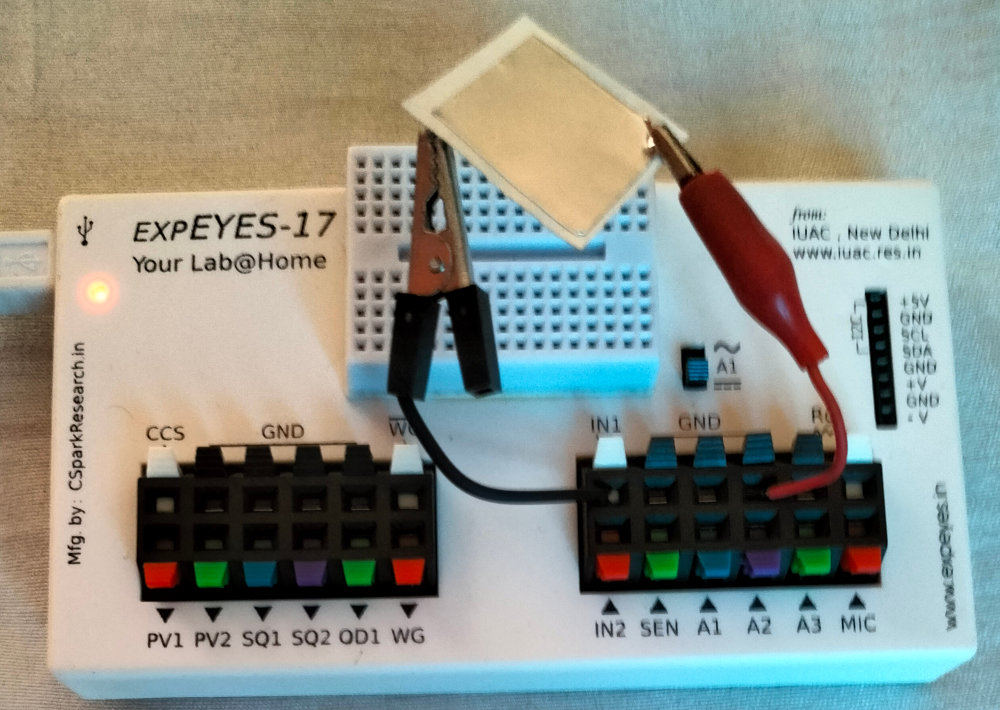
Capacitance is the capability of an object to store electric charge. Accumulating charge results in rising the potential of the object with respect to it’s surroundings. Capacitance is defined as the Charge to potential ratio, $ C = \frac{Q}{V} $. Mutual capacitance is measured between two components, like two parallel metal plates. The capacitance of a parallel plate capacitor depends on the overlapping area of the plates, distance between the plates and the dielectric constant of the material between the plates. The capacitance does not depend on the material of the plates.
The screenshot of the result and the experimental setup are shown below. Repeat the measurement using different types of capacitors.

 The capacitor made using aluminium tape gives around 294 pF. You may try using other cpacitors and also by making series and parallel combinations.
The capacitor made using aluminium tape gives around 294 pF. You may try using other cpacitors and also by making series and parallel combinations.
Do not touch the plates during the measurement. The capcitance is measured by injecting a known amount of charge and measuring the potential difference created by it. This process assumes that there no other path for the charge to escape.